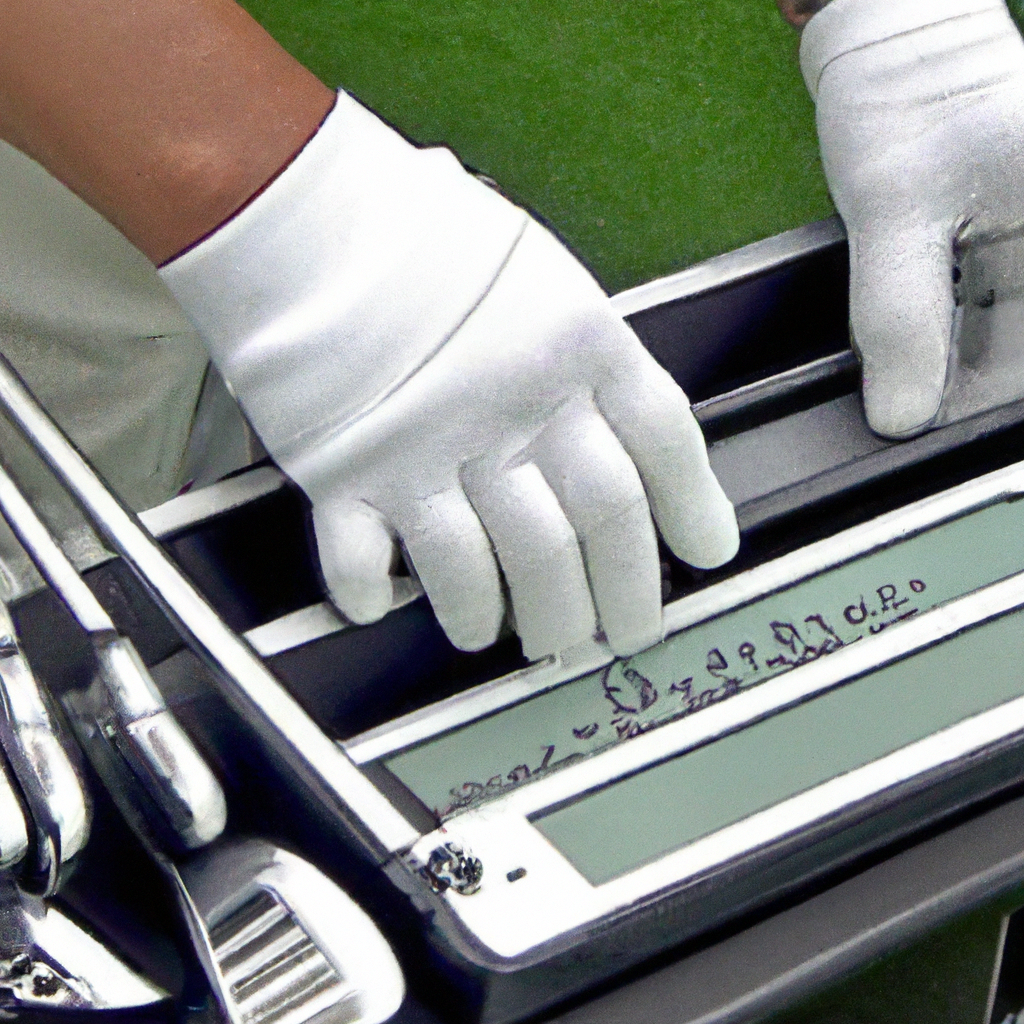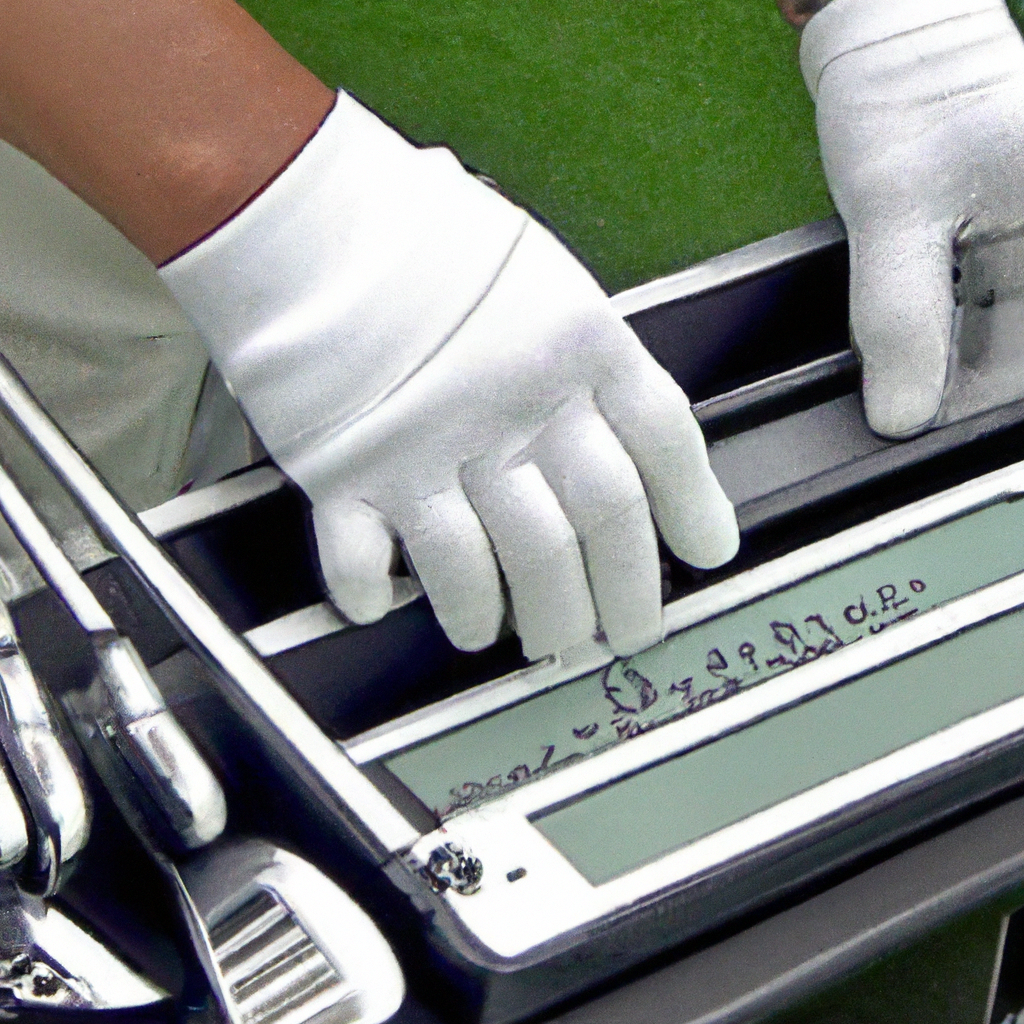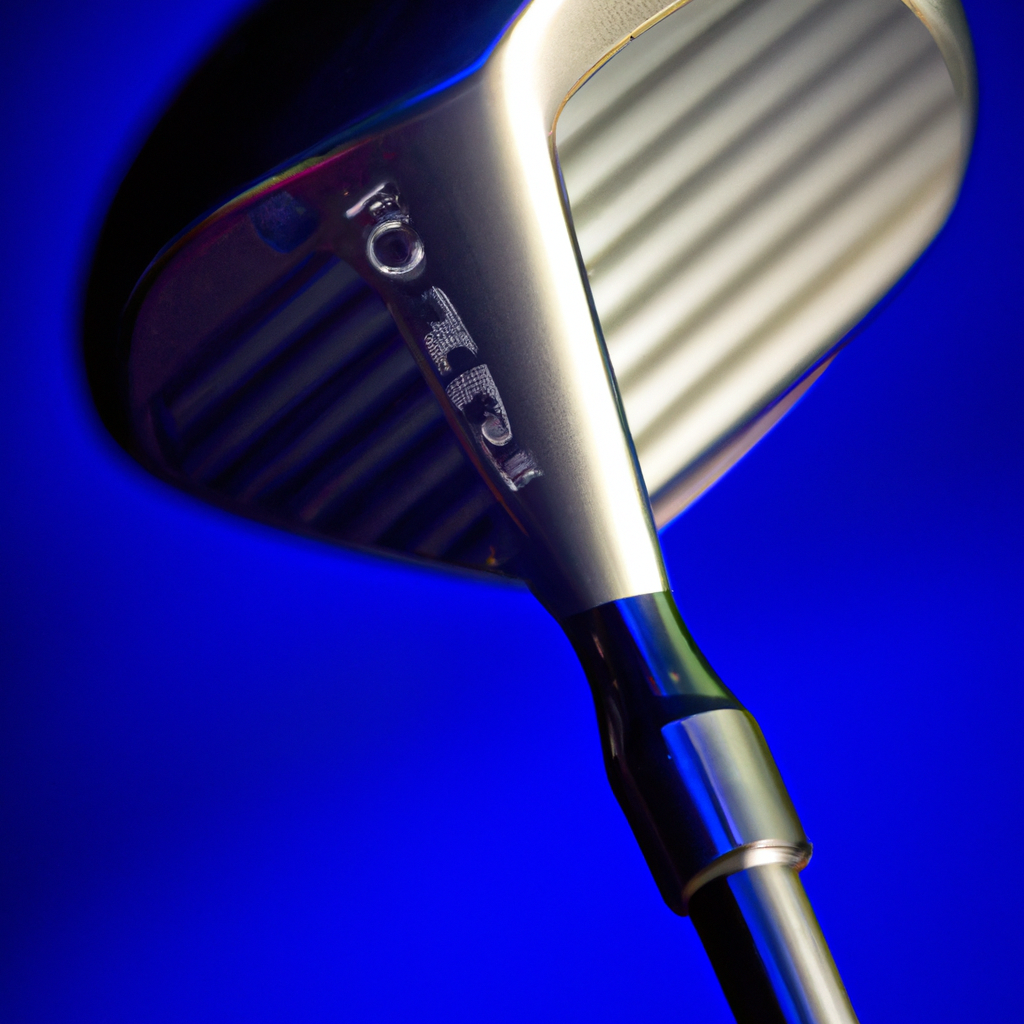Have you ever wondered how to measure the loft of your golf club? Understanding the loft of your golf club is essential for achieving the perfect shot on the green. In this article, we will guide you through the process of measuring the loft of your golf club, providing you with all the necessary information to improve your golf game. Whether you are a beginner or a seasoned golfer, this article will help you understand the importance of measuring golf club loft and how it can impact your shots. So, let’s get started and unlock the secrets to a more precise and powerful swing!

Determining Loft Angle
Determining the loft angle of your golf clubs is important for understanding the characteristics of each club and optimizing your performance on the course. Whether you want to calculate the loft angle yourself or seek professional help, there are several methods and tools available to assist you in this process. In this article, we will explore different ways to measure club loft, including using the protractor method, a loft/lie machine, and a launch monitor. We will also discuss the factors that can affect club loft and delve into the connection between loft angles and wedges. Let’s dive in!
Understanding Loft Angle
Before we delve into the methods of measuring loft angle, let’s start by understanding what loft angle actually means. Loft angle refers to the angle between the clubface and the shaft of a golf club. It plays a crucial role in determining how high and how far the golf ball will travel when struck with that particular club. The loft angle is usually printed or engraved on the clubhead, but it’s important to verify the stated loft angle using reliable measurement methods, as manufacturing tolerances can result in slight variations.
Finding the Loft Angle on Clubhead
Most modern golf clubs have the loft angle printed on the clubhead. The print typically appears on the sole or the back of the clubhead, near the club number. If the number is not clearly visible, you may need to use a magnifying glass or a smartphone camera to read it. Additionally, some clubs may have loft angle markings on the hosel or the leading edge of the clubface. Take a moment to look for these markings on your clubs, as they can help you confirm the stated loft angle.
Using Loft Angle Measurement Tools
To obtain accurate measurements of loft angle, you can utilize various loft angle measurement tools available in the market. These tools provide a precise way to measure the loft angle of your clubs and can be helpful in adjusting and fine-tuning your equipment. Let’s explore a couple of popular methods for measuring loft angle in more detail.
Using Protractor Method
Requirements
To measure the loft angle using the protractor method, you will need a protractor, a ruler, and a flat surface to work on. Additionally, having an assistant or a tripod to hold the club steady can make the process easier and more accurate.
Process
Start by placing the club on the flat surface, ensuring that the clubface is perpendicular to the surface. Use the ruler to align the club shaft with the edge of the protractor, ensuring that the zero degree mark aligns with the center of the clubface.
Calculating Angle
Carefully read the loft angle by noting the corresponding degree on the protractor where the clubhead intersects. For example, if the clubhead intersects at 45 degrees on the protractor, the loft angle would be 45 degrees.
Repeat for Other Clubs
Repeat the process for all your clubs to determine their respective loft angles. Remember to use the same alignment and measurement techniques to maintain consistency. This will allow you to identify any variations in loft angles across your set of clubs.
Using Loft/Lie Machine
Requirements
A loft/lie machine is a mechanical device used to measure and adjust the loft and lie angles of golf clubs. To use this method, you will need access to a loft/lie machine, which can be found at some golf shops or club repair services.
Setup
First, mount the club securely in the machine, ensuring that it is positioned correctly with the clubface resting on the back pad. Adjust the machine to align the loft/lie measuring arm precisely with the clubface.
Measuring Loft Angle
Activate the machine to make the measuring arm touch the clubface gently. The machine will provide a digital readout or a dial indicator to display the loft angle. Take note of the reading, as it represents the measured loft angle of the club.
Verifying Measurements
To verify the accuracy of your club’s loft angle, you can compare the measurement obtained from the loft/lie machine with the stated loft angle of the club. This will help you identify any discrepancies and determine whether adjustments need to be made.

Using Launch Monitor
Understanding the Technology
Launch monitors are advanced devices that utilize sensors and algorithms to measure various parameters of a golf shot, including clubhead speed, ball speed, launch angle, spin rate, and more. These devices provide comprehensive data that can be used to analyze swing performance and optimize club selection.
Measuring Loft Angle
Launch monitors can also measure the loft angle of your clubs. By capturing data on the launch angle of the ball during flight, the launch monitor can calculate the loft angle at impact. This method provides instant and accurate measurements, eliminating the need for additional tools or equipment.
Analyzing Data
In addition to measuring loft angle, launch monitors offer valuable insights into your swing mechanics and club performance. By analyzing the data provided by the launch monitor, you can identify areas for improvement, make educated equipment choices, and enhance your overall game.
Comparing Results across Clubs
Using a launch monitor can help you compare the loft angles of different clubs in your bag. This information can be particularly useful when determining the loft gaps between clubs and selecting the appropriate club for each shot. By understanding the loft variations across your set, you can make more informed decisions on the course and optimize your distance and control.
Seeking Professional Help
While the aforementioned methods provide reliable ways to measure loft angle on your own, it can sometimes be beneficial to seek professional assistance. Golf professionals, club fitters, and experienced golfers can offer valuable insights and expertise to help you optimize your loft angles and overall performance.
Professional Club Fittings
Professional club fittings entail working with a qualified club fitter who can analyze your swing mechanics, assess your needs, and recommend suitable equipment. During a club fitting session, the fitter may use specialized tools and launch monitors to measure and adjust club loft angles based on your swing characteristics. This personalized approach can result in a more optimized and tailored set of clubs for your specific game.
Consulting Golf Club Repair Services
Golf club repair services often employ skilled technicians who have the expertise and specialized equipment required to accurately measure and adjust loft angles. Whether you want to verify the stated loft angle of your clubs or make custom adjustments, these professionals can provide valuable assistance. They can also undertake loft angle adjustments to help you achieve the desired launch conditions and optimize your shots.
Getting Advice from Experienced Golfers
Experienced golfers who have a deep understanding of equipment and the game itself can offer valuable advice on loft angle selection. By observing your swing and evaluating your performance, these individuals can provide insights into loft angles that may benefit your specific playing style. Engaging in discussions with experienced golfers can broaden your knowledge on loft angles and help you make informed decisions when selecting or adjusting your clubs.
Factors Affecting Club Loft
Clubhead Design The design of the clubhead plays a significant role in determining the loft angle. Different clubhead designs, such as cavity back or blade-style irons, have varying weight distributions and center of gravity positions. These design characteristics can impact the launch angle and spin rate, ultimately affecting the loft angle and overall performance of the club.
Clubface Angle The clubface angle, often referred to as the “open” or “closed” position, can influence the loft angle at impact. A clubface that is open will add loft to the shot, while a closed clubface will reduce loft. Understanding and manipulating the clubface angle can help you fine-tune your loft angles and control your shots more effectively.
Shaft Characteristics The characteristics of the shaft, including its flex, length, and weight, can also affect the loft angle. A stiff shaft, for example, may result in a lower launch angle and reduce the effective loft of the club. It’s important to consider the interplay between the clubhead and the shaft when assessing and adjusting loft angles.
Player Swing Mechanics The dynamics of an individual’s swing mechanics, including swing speed, attack angle, and release timing, can impact the loft angle produced. Players with a steeper downswing may naturally de-loft the clubface, leading to lower launch angles. Understanding your swing mechanics and how they affect loft can help you make adjustments or select clubs that complement your unique swing characteristics.
Understanding Loft and Distance
Loft Angle and Ball Height The loft angle of a club has a direct impact on the height the ball will reach during its flight. A higher loft angle will generally result in a higher ball flight, while a lower loft angle will produce a lower trajectory. By understanding the relationship between loft and ball height, you can strategically select the appropriate club based on the circumstances and distances involved.
Implications for Carry Distance The loft angle also affects the carry distance of a golf shot. A higher loft angle can increase the carry distance, while a lower loft angle can produce a flatter trajectory and longer roll-out. When selecting a club, it’s important to consider the desired carry distance and adjust loft angles accordingly.
Impact on Shot Trajectory Shot trajectory refers to the path the ball takes from its launch to its landing. The loft angle plays a crucial role in determining the initial trajectory of the shot. By adjusting the loft angle, you can influence shot trajectory, allowing you to navigate hazards, achieve accurate landings, and approach the pin more effectively.
Effect on Overall Distance While loft angle can affect carry distance and shot trajectory, it is important to note that other factors, such as clubhead speed, ball spin, and launch conditions, also impact overall distance. The loft angle should be optimized in conjunction with these factors to achieve the maximum distance potential for each club in your set.
The Loft-Wedge Connection
Loft Gaps in Wedge Sets Wedge sets typically include a pitching wedge (PW), a gap wedge (GW), a sand wedge (SW), and a lob wedge (LW). Each of these wedges has a specific loft angle assigned to it. The loft gaps between these wedges ensure that there is a consistent distance separation between shots. However, it is essential to choose wedges with loft angles that suit your playing style and course conditions, as these factors can influence the desired loft combinations.
Determining Correct Loft Combination Selecting the correct loft combination for your wedge set is vital for optimizing your short game. It requires an understanding of your playing style, the distances you want to cover, and your ability to control each type of shot. Experimenting with different loft combinations and seeking professional advice can help you find the optimal mix that suits your preferences and maximizes your short game performance.
Effectiveness of Proper Loft Gapping By having the correct loft gaps in your wedge set, you can cover a wide range of distances with minimal adjustments to your swing mechanics. Proper loft gapping ensures that shots are consistent and predictable, allowing you to confidently execute shots around the greens. Investing time in determining the correct loft gapping will help you improve your scoring and increase your chances of making more putts.
Fine-tuning Loft with Adjustments Depending on your preferences and the shots you want to execute, you may consider making adjustments to the loft angles of your wedges. Increasing or decreasing the loft angles can alter the distance and trajectory of your shots, giving you more options to navigate various scenarios on the course. However, it’s important to note that loft adjustments should be made judiciously and preferably with the guidance of a professional or experienced golfer.
Importance of Loft Angles
Optimal Launch Conditions Understanding and optimizing loft angles is crucial for achieving optimal launch conditions. By launching the ball at the correct angle, you can maximize distance, control, and accuracy. A well-tailored loft angle will help you achieve the desired launch conditions, allowing the ball to soar through the air with precision.
Personalized Loft for Better Performance Each golfer has a unique swing style, and tailoring the loft angles to match your swing can significantly enhance your performance. By customizing your loft angles, you can maximize your potential distance and accuracy, leading to lower scores and a more enjoyable golfing experience.
Maximizing Distance and Control Accurate loft angles can have a substantial impact on both distance and control. By honing in on the optimal loft for your swing characteristics, you can unlock additional distance potential while ensuring consistency and control throughout your game. This translates to more confidence on the course and increased performance.
Influencing Shot Shape Loft angles can also influence shot shape. By manipulating the club’s loft, you can promote a fade or a draw, altering the curvature of your shots. This can be particularly helpful when trying to navigate challenging fairways or set up approach shots to specific pin locations. Understanding the relationship between loft angles and shot shape can give you an extra edge in your strategic decision-making on the course.
Common Misconceptions
Higher Loft for More Distance Contrary to common belief, a higher loft angle does not necessarily guarantee more distance. While a higher loft can result in a higher launch angle and increased carry, it can also generate more backspin, which may limit the roll-out distance. Optimizing the loft angle based on factors such as swing speed, attack angle, and ball characteristics is key to balancing both distance and control.
Unified Loft Angles across Brands Loft angles can vary across different club brands and models. This means that a 7-iron from one manufacturer may have a different loft angle than a 7-iron from another manufacturer. It is important to be aware of these variations and consider them when selecting new clubs or comparing loft angles between different sets.
Loft Angle and Club Selection Lastly, it’s worth noting that loft angle is just one of the many factors to consider when selecting a club. Other important factors include club length, shaft flex, and clubhead design. Understanding how loft angle interacts with these factors will help you make informed decisions when choosing the right club for a particular shot.
In conclusion, determining loft angles is a vital aspect of optimizing your golf game. By using the various methods and tools available, you can measure and adjust loft angles to suit your playing style and course conditions. Seeking professional help, understanding the factors affecting club loft, and recognizing the importance of loft angles in distance and control will enable you to make informed choices and improve your overall performance on the course. So, measure those loft angles, fine-tune your clubs, and watch your game soar to new heights!



